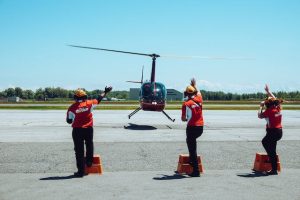Introduction:
In the realm of aviation, air traffic controllers are the unsung heroes orchestrating the complex ballet of aircraft in our skies. However, beneath of control towers and radar screens, a growing concern looms the alarming trend of job strain among these professionals. This introduction sets the stage for an exploration into the intricacies of their work and the challenges that have led to increased stress within this critical profession.
Behind the Radar: Unveiling the Complexities of Air Traffic Control
Air traffic control is a demanding profession that requires split-second decision-making, impeccable communication skills, and the ability to manage high-stress situations. This section provides an in-depth look at the complexities of air traffic control work, shedding light on the unique stressors faced by controllers as they ensure the safe and efficient movement of aircraft.
The Human Element: Impact of Job Strain on Air Traffic Controller Performance
Job strain takes a toll not only on the operational aspects of air traffic control but also on the well-being and performance of the controllers themselves. We delve into how the stressors inherent in their work can affect the mental and emotional health of air traffic controllers, potentially impacting their ability to maintain the high standards required for the job.
Factors Contributing to Job Strain: Understanding the Challenges
Identifying the factors contributing to job strain is crucial for addressing the root causes. This section analyzes high workload, tight schedules, and the immense responsibility air traffic controllers bear for the safety of passengers and aircraft. Understanding these challenges is a step toward implementing effective strategies for mitigating job strain.
The Ripple Effect: Job Strain’s Impact on Mental Health and Personal Lives
Job strain doesn’t stay confined to the control tower; it has a ripple effect on the mental health and personal lives of air traffic controllers. We explore how the stresses of the job can permeate various aspects of their lives, affecting relationships, well-being, and overall quality of life.
Aviation Safety at Stake: Addressing Job Strain to Ensure a Safe Skies
The connection between air traffic controller well-being and the overall safety of air travel is a critical consideration. This section emphasizes the pivotal role controllers play in aviation safety and advocates for proactive measures to address job strain, ensuring that the skies remain safe for all.

Industry Responses: Strategies Employed to Tackle Job Strain
The aviation industry, regulatory bodies, and air traffic control organizations are not oblivious to the challenges faced by controllers. Here, we investigate the initiatives taken to address job strain, examining policies, support systems, and innovations aimed at creating a healthier work environment for air traffic controllers.
Global Perspectives: Job Strain in Air Traffic Control Worldwide
Job strain is not exclusive to a particular region; it’s a global concern. This section expands the discussion to a global scale, comparing how different countries manage job strain among their air traffic controllers. By drawing lessons from various approaches, we seek to identify best practices for improving the well-being of controllers worldwide.
Preventive Measures: Building Resilience and Support Systems
Preventing job strain requires a proactive approach. We propose practical measures and support systems designed to build resilience among air traffic controllers. From mentorship programs to mental health resources, these initiatives aim to create an environment that fosters well-being and professional satisfaction.
Visual Table for Key Points:
| Heading | Key Points |
|---|---|
| Behind the Radar | Demanding nature of control work and stressors faced |
| The Human Element | Impact of job strain on performance and well-being of controllers |
| Factors Contributing to Job Strain | Analysis of high workload, tight schedules, and responsibility |
| The Ripple Effect | Extension of job strain on mental health and personal lives |
| Aviation Safety at Stake | Connection between controller well-being and overall aviation safety |
| Industry Responses | Initiatives by the aviation industry to address job strain |
| Global Perspectives | A comparison of how different countries manage job strain |
| Preventive Measures | Practical steps and support systems to prevent job strain |
Conclusion
In the conclusion, we summarize key insights and issue a call for collective responsibility. As air travel continues to be an integral part of our global connectivity, ensuring the mental and emotional well-being of controllers becomes a shared responsibility. Together, we can work towards maintaining clear skies and a safe journey for all.




